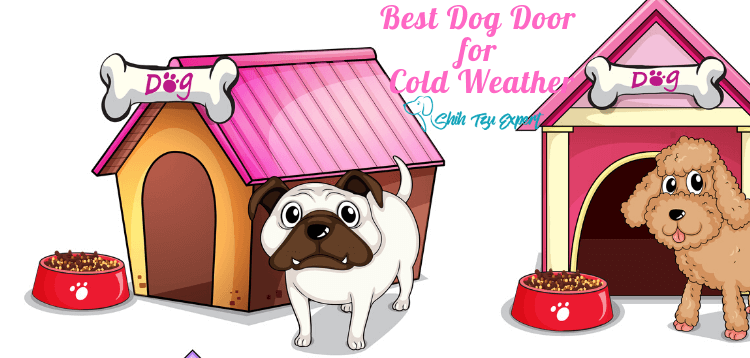Best indoor dog house reviews: Our top 5
-
Wood and Wire Indoor Crate
This casual, crate-style dog home has a sleek end table design that blends in well with most indoor décor. It has ventilation on all sides to promote air flow, and its simple four-walled structure makes it simple to assemble and break down. It also has a lockable latch for added security and peace of mind when you leave the house, although you can leave the door off during assembly.
The house is available in black, taupe gray, espresso, and white to match the other furniture in the room. It also comes in four sizes. The wood design makes the structure durable and relatively scratch-resistant. Some customers noted that the wooden design, while aesthetically pleasing, did require some maintenance.
End table design
Available in a variety of sizes and colors
Shipped with all tools needed for assembly
Provides ventilation
Cons:
No insulation; would not be suitable for outdoor use
Requires some maintenance
Not suitable for dogs that are not potty-trained (wood absorbs water)
-
Igloo Dog House by Petmate
Materials made with microban technology fight bacteria, mildew, and mold, making this dog house suitable for indoors or outdoors. Its robust outer plastic shell also protects against unpredictable weather.
The dog house is available in three sizes and is generally suitable for any dogs between 25 and 175 pounds. While it is well-insulated, it features a vent on the roof to allow for airflow. It also has raised floors and small moats to reduce flooding.
Customers have praised this product for its simple assembly and cleanup, although some buyers with large dogs complained that their dogs didn’t fit through the small door.
Suitable for indoor and outdoor use
Three sizes
Simple to assemble and clean
Microban technology
Cons:
Not suitable for dogs under 25 lbs or over 175 lbs
The door may be too small for large dogs

-
Wooden Pet House by Merry Pet
This cabin-style dog home features a ladder, balcony, and lattice fence. Its wooden structure makes it robust but lightweight. The structure is most suitable for small to medium-sized dogs and will not require any separate tools to assemble. It features a raised floor to help prevent flooding.
Customers noted that this product was simple to assemble, but some stated that pieces of it required coaxing to fit together properly. Overall, this product was highly-rated; customers like the appearance of the product and felt that maintenance and cleaning was easy.
Made with durable cedar
Suitable for indoor and outdoor use
Raised flooring
Attractive cabin-style design
Cons:
Only suitable for small and medium breeds
Only offered in one size
A few of the pieces are long and may require coaxing
-
Indoor Pet House by Petmate
This barn-style home is one of the best options for both indoor and outdoor use. It is waterproof, well-insulated, and well-ventilated. It also includes a rim that diverts rain and the floor is raised to prevent flooding. The classic “bleached linen/black” barn-shaped design makes it suitable for most indoor décor.
It is available in four sizes and fits most small to medium-sized dogs. While the design does not feature a latch door, it is also one of the easiest dog houses to assemble; it comes in two larger pieces that snap together and requires no tools. The top snaps off for easy cleaning.
Made from durable plastic that is lightweight and waterproof
Well-insulated
Well-ventilated
Available in 4 sizes
Easy cleaning
Simple assembly
Cons:
No doors
-
Petego Umbra Portable Pet House
This portable dog house has an umbrella “pop-up” mechanism that helps with easy assembly and breakdown. The compact design makes it the perfect option for dog owners who are looking for a dog home that they can take with them while traveling or camping!
While it is not as durable as a wooden or plastic structure, it includes durable, claw-proof mesh on the windows for added security. Its windows allow for maximum ventilation and airflow.
Claw-proof mesh design
Spacious design
Comes in 3 sizes
Easy assembly
Cons
Not as durable
Not suited for long-term outdoor use
No insulation

Our top choice:
Does your dog really need an indoor dog house?
Now that we’ve reviewed the best indoor dog houses on the market, let’s discuss the top reasons dog owners choose to invest in an indoor home:
- It provides a place for pets to sleep
- It helps with dog training
- It is private and secure
- Many dog homes are multi-functional
A Place to Sleep:
Dog Training:
For dog owners looking to train their dog, buying an indoor dog house will help! Dogs can act out when they don’t have a personal space in the home to return to when they are tired or frightened, usually by destroying furniture, shoes, or electronics. Having a separate space for the dog is a part of “crate training,” which helps avoid these problems down the road.
Privacy:
Many dogs need a safe haven in the home where they can retreat after socializing. An indoor dog house provides dogs with a “home within a home”: a separate, private space for them to relax or sleep without infringing on other spaces in the house (bedrooms, etc.).
Multi-functionality:
Many crate-style or small pet homes can be easily converted into a mobile house for your dog while your travel. This provides a familiar space for your pet on the road, which may help with any travel anxiety. Furthermore, many indoor dog houses can be used outdoors too!
What should you look for when buying an indoor dog house?
There are a number of factors that go into choosing the right indoor dog house for your dog; keep the following considerations in mind as you shop.
Size:
Aesthetics:
Cleaning:
Part of being a responsible dog owner is ensuring that all your dog’s spaces are kept clean and tidy. You’ll want to make this as easy as possible for yourself by choosing an indoor dog home that is easy to clean! Look for features like water-resistant surfaces or detachable cushions that can be thrown in with the laundry.
Latching Door:
If you plan to use your indoor dog house for travel, training, or for general safety when others are in the house, you’ll want to make sure that the model you buy includes a latching door. Many indoor dog houses designed simply for sleeping or lounging don’t have this feature, so be sure to consider your specific needs before you buy.
Storage and assembly:
Make sure you check on the assembly requirements (and any tools or hardware you might need); some are easier than others to put together, take down, and prepare for storage. Some indoor dog houses are collapsible and can fold flat for simple storing, while others (usually wooden) require more storage space and may take more time to build and disassemble.

Ventilation:
One of the most important factors to consider is the ventilation of the space, especially if you anticipate that your dog will spend a significant amount of time there. If the dog home doesn’t have a door, make sure there are other spaces for airflow; some dog homes include durable mesh windows or vents that allow for breathability. Even if the dog home has a door, make sure it still has small windows so the air can flow through freely. Keep the breed of your dog in mind when considering ventilation needs, too; some dogs can easily overheat!
Weight:
You’ll want to note how heavy the fully-assembled dog house will be. If the house is too light, your dog may knock it down. On the other hand, if it is too heavy, you won’t be able to move it without disassembling it.
What is the best material for an indoor dog house?
One of the main factors you’ll need to consider when choosing the best indoor dog house for your pet is the building material—most are constructed with wood, plastic, or canvas. You’ll need to consider the strengths of each building material as you weigh the various possibilities.
Wood:
Plastic:
The primary advantage of indoor dog houses made from plastic is that they are waterproof, which makes for easy cleaning. The material is also lightweight and simple to assemble compared to the wooden models—these designs usually include large pieces that fit together without added hardware or hassle.
Canvas:
Indoor versus outdoor dog houses:
There are some parallels between indoor and outdoor dog houses, but there are a few notable differences—namely, the requirements for weight, durability, and insulation. When choosing the right outdoor dog house, you’ll need to make sure that the structure is robust enough to provide shelter for your dog in varying and unpredictable conditions, including rain, wind, and snow (depending on where you live). The best outdoor dog houses also have raised floors to prevent the wood from rotting (if the design includes wood), and to prevent flooding. Aesthetics take a back seat here—the most important consideration is the safety of your dog.
Indoor houses, however, are places of refuge and rest for your dog. Insulation, durability, and weight are less important, and aesthetics matter! If you’re looking to buy an indoor dog home and don’t plan on moving it outside, you’ll want to think most about the comfort level for your dog and the visual appeal of the design.

Some dog houses can be used both indoors and outdoors. If you are hoping to purchase a home for your dog that has indoor/outdoor versatility, you’ll need to do some extra research. Below is more information about the three main factors you’ll need to consider if you’re hoping to buy a multi-purpose indoor dog house that can also function well outside.
Insulation:
Insulation is especially important for any dog houses that will remain outside in variable climates. Most insulation in plastic models comes from layers of foam embedded inside the paneling of the roof and walls, although good-quality wood dog houses provide some natural insulation. These models are designed to trap heat inside the house structure on cold days and keep the dog cool are warmer days (to prevent overheating). If you’re looking for a structure that will work well both indoors and outdoors, a wooden model is a good versatile option.
Durability:
You’ll need to consider the general durability of a dog house if you want the option to move the indoor house outdoors. The structure needs to be able to withstand intermittent heat, rain, wind, and/or snow (depending on where you live) and protect your dog from falling branches or debris.
Weight:
The main distinction weight-wise between indoor and outdoor dog houses is that houses built for the outdoors are usually much heavier and harder to transport. For this reason, you should think about how you are going to transport the structure in and out of your home if you are planning to use it in both settings. Outdoor dog houses are usually constructed in one place and are less likely to be used for other purposes (such as travel).
Dangers and risks of indoor dog houses:
Safety is always the number one priority when considering which indoor house will suit your dog best. You should make sure there are no sharp edges on the structure that could harm your dog, and check that all surfaces are smooth and sanded to prevent splintering (this is especially important for indoor dog houses made from wood). You should also confirm that there are enough vents, windows, or mesh surfaces in the dog house to promote airflow and prevent overheating.


![10 Best Dog Crates for Separation Anxiety [High anxiety dog crates 2019 Reviews] 10 Best Dog Crates for Separation Anxiety [High anxiety dog crates 2019 Reviews]](https://shihtzuexpert.com/wp-content/uploads/2019/05/5-3.jpg)

